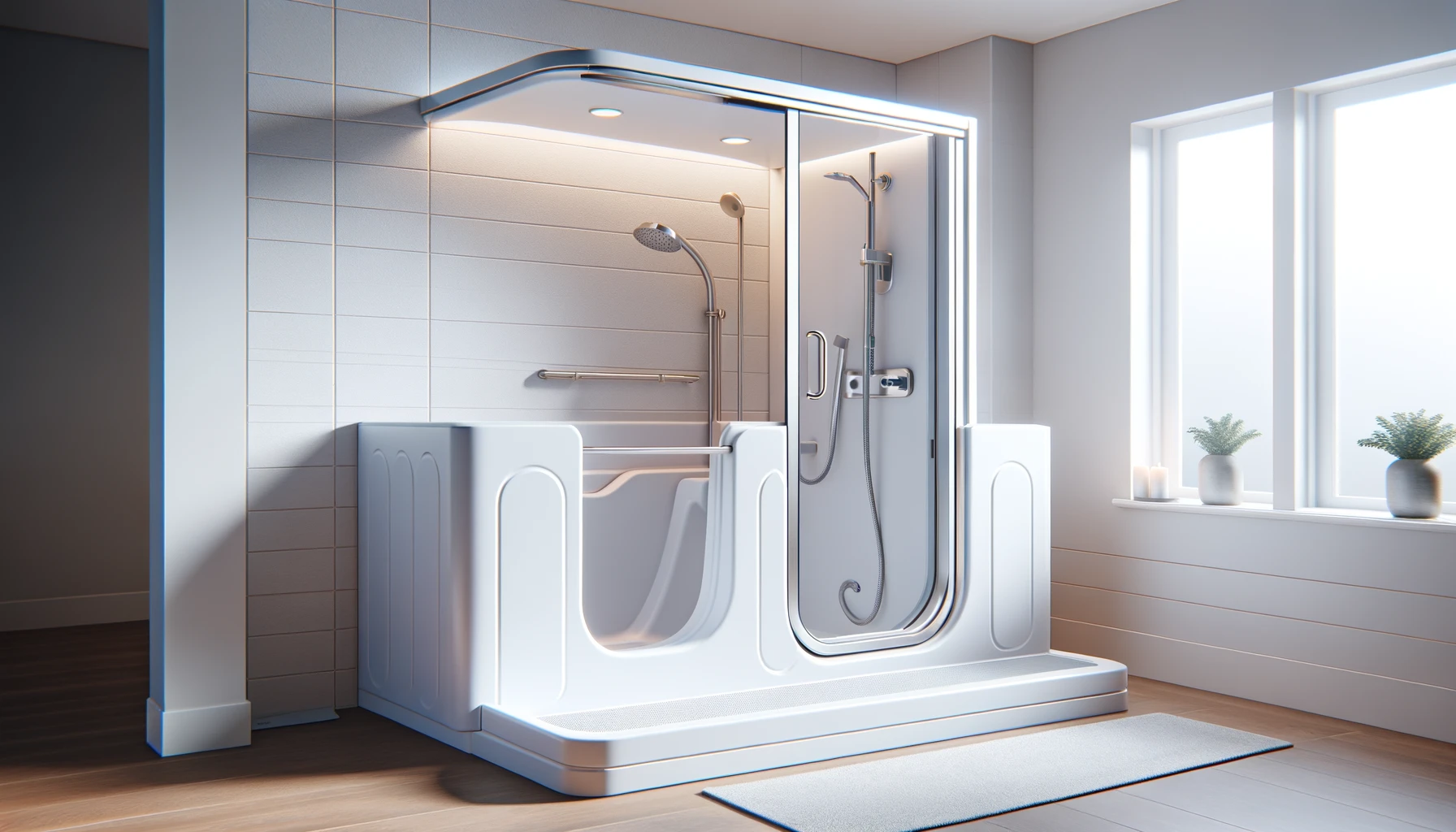Walk In Tubs For Seniors – The 2024 Ultimate Guide!
Introduction to Walk In Tubs For Seniors
Ensuring the safety and comfort of seniors within their homes has never been more important, especially in areas prone to slips and falls, such as the bathroom. As we age, our mobility and balance can become compromised, making everyday tasks like bathing more challenging and hazardous. Recognizing these challenges, it’s crucial to seek solutions that not only safeguard against potential accidents but also promote independence and enhance the quality of life for our elderly loved ones.
In essence, the integration of a walk in tub into the home of a senior is more than a mere home improvement—it’s an investment in their safety, independence, and overall quality of life. As we delve deeper into this guide, we’ll explore the many facets of walk in tubs, highlighting their benefits, key features to consider, and tips for choosing the right model to meet the unique needs of seniors.
This article is a guide to walk in tubs for seniors, if you are looking for our review of walk in tubs check out this article: Best Walk In Tubs For Seniors 2024 Review
Understanding Walk In Tubs For Seniors
Walk in tubs for seniors are ingeniously designed to cater to the unique needs of seniors, blending safety, convenience, and therapeutic benefits into one comprehensive solution. At their core, these units are about providing a secure and comfortable bathing experience, but they go beyond that by incorporating a variety of features tailored to enhance the well-being and independence of elderly users.
Design of Walk In Tubs For Seniors
The hallmark of a walk in tub is its easy-access door, which allows users to enter and exit the tub without the need to climb over a high edge, drastically reducing the risk of slips and falls. Once inside, the bather can choose to sit comfortably on a built-in, chair-height seat, ensuring a secure and comfortable position throughout the bathing process. The multifunctional nature of these units means that users can enjoy the full immersion of a bath depending on their preference at the time.
Key Features of a Walk in Tubs For Seniors:
- Low-Threshold Entry: The low step-in height makes it easier for seniors with limited mobility to access the tub safely, promoting independence in personal care routines.
- Non-Slip Flooring: Textured, non-slip surfaces on both the floor of the tub and the seat help prevent accidents, providing a secure footing and sitting area.
- Easy-to-Reach Controls: Strategically placed controls for water flow, temperature, and jetted features are easily accessible, ensuring users can manage their bathing experience without strain.
- Handheld Showerhead: A handheld showerhead offers flexibility, allowing users to easily rinse off without having to stand or reposition significantly.
- Safety Bars: Integrated grab bars within the tub provide additional support for moving in and out of the tub, further reducing the risk of falls.
- Therapeutic Features: Many models include therapeutic options like hydrotherapy jets and air baths, which can help soothe aches and pains, beneficial for seniors with arthritis or muscle stiffness.
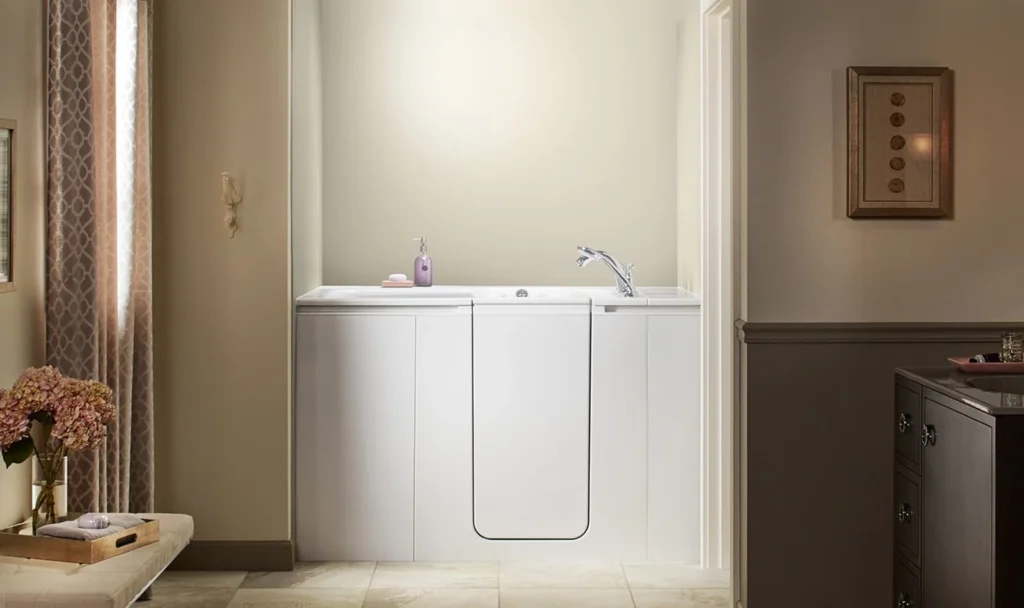
Catering to the Needs of Seniors
These features are not just about physical safety; they also address the psychological aspects of aging. The ability to bathe independently, without fear of falling or the need for assistance, can significantly impact a senior’s mental health and self-esteem. The therapeutic benefits of hydrotherapy jets and air baths can improve circulation, relieve pain, and provide a sense of relaxation and well-being.
Moreover, the design considerations of walk in tubs for seniors tubs take into account the potential for future mobility changes. As seniors age, their needs may evolve, and having a bathroom setup that accommodates those changes without requiring significant modifications can offer peace of mind to both the seniors and their families.
In essence, walk in tubs for seniors tubs represent a thoughtful convergence of design and functionality, aimed at addressing the specific challenges faced by seniors in their daily routines. By prioritizing accessibility, safety, and comfort, these innovative bathing solutions empower seniors to maintain their independence and quality of life, even as their mobility needs change.
Benefits of Walk In Tubs for Seniors
Walk in tubs stand out as a transformative advancement in senior care, offering a plethora of benefits designed to enhance the safety, health, and independence of elderly individuals. These benefits cater not only to the physical well-being of seniors but also bolster their mental health and self-esteem by enabling them to maintain personal hygiene with dignity and autonomy.
Safety Advantages of Walk In Tubs For Seniors
The primary benefit of walk in tubs is the significant reduction in the risk of falls—a common and often serious concern for seniors. The design features of these tubs, including low-threshold entry, non-slip flooring, and strategically placed grab bars, directly address the hazards present in traditional bathroom setups. By minimizing the need to step over a high tub edge or stand on a slippery floor, walk in tubs for seniors considerably lower the potential for accidents, ensuring a safer bathing environment for seniors.
Health Benefits of Walk In Tubs For Seniors
Beyond safety, walk in tubs for seniors offer substantial health advantages, particularly for seniors dealing with chronic pain or conditions such as arthritis. Many models are equipped with therapeutic features like hydrotherapy jets and air baths that can help alleviate muscle stiffness, reduce inflammation, and improve circulation. The warm water and massage-like effects of these features can provide relief from pain and discomfort, promoting relaxation and enhancing overall well-being. For seniors, these health benefits can mean better mobility, reduced reliance on pain medication, and an improved quality of life.
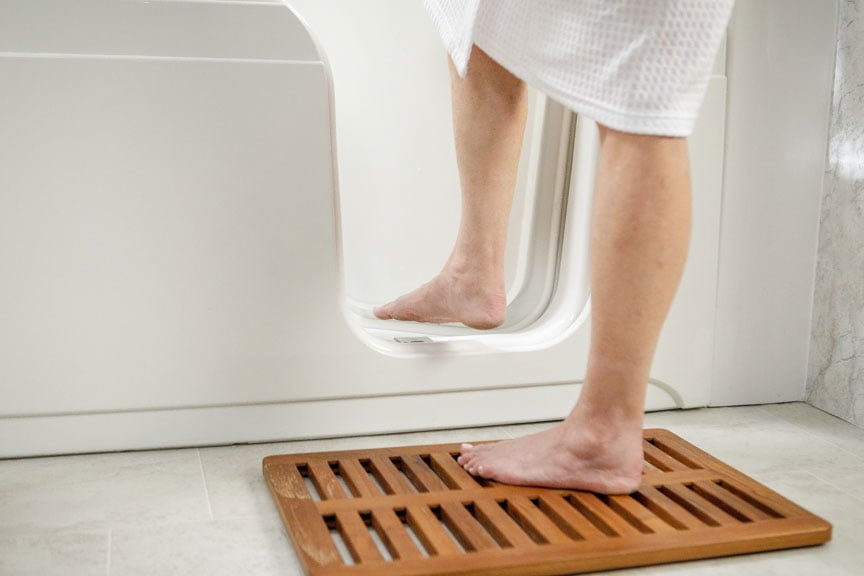
Independence and Dignity
Perhaps one of the most significant impacts of walk in tubs is on seniors’ independence and dignity. The ability to bathe oneself safely and comfortably is a fundamental aspect of personal care that many seniors wish to maintain for as long as possible. walk in tubs for seniors facilitate this independence by adapting to the physical limitations that often come with aging. This autonomy in daily routines can have a profound positive effect on a senior’s mental health, fostering a sense of self-reliance and confidence.
Moreover, the dignity afforded by these bathing solutions cannot be overstated. The privacy and personal space to manage one’s hygiene without assistance preserve a senior’s dignity and promote a more positive self-image. This aspect of walk in tubs is invaluable, as it touches on the emotional and psychological well-being of seniors, contributing to a more satisfying and dignified quality of life.
In conclusion, walk in tubs for seniors embody a holistic approach to senior care, addressing not just the physical needs of elderly individuals but also nurturing their mental health, independence, and dignity. These benefits collectively offer a compelling case for considering walk in tubs as a key element in creating a safe, comfortable, and empowering living environment for seniors.
Choosing the Right Walk In Tub Your Home
Selecting the ideal walk in tubs for seniors involves more than just recognizing its benefits. It requires careful consideration of several factors to ensure the chosen model fits not only the senior’s needs but also the physical constraints of their home. From the tub’s dimensions to its therapeutic features, each aspect plays a critical role in maximizing safety, comfort, and convenience. Here’s a comprehensive guide to help you make an informed decision.
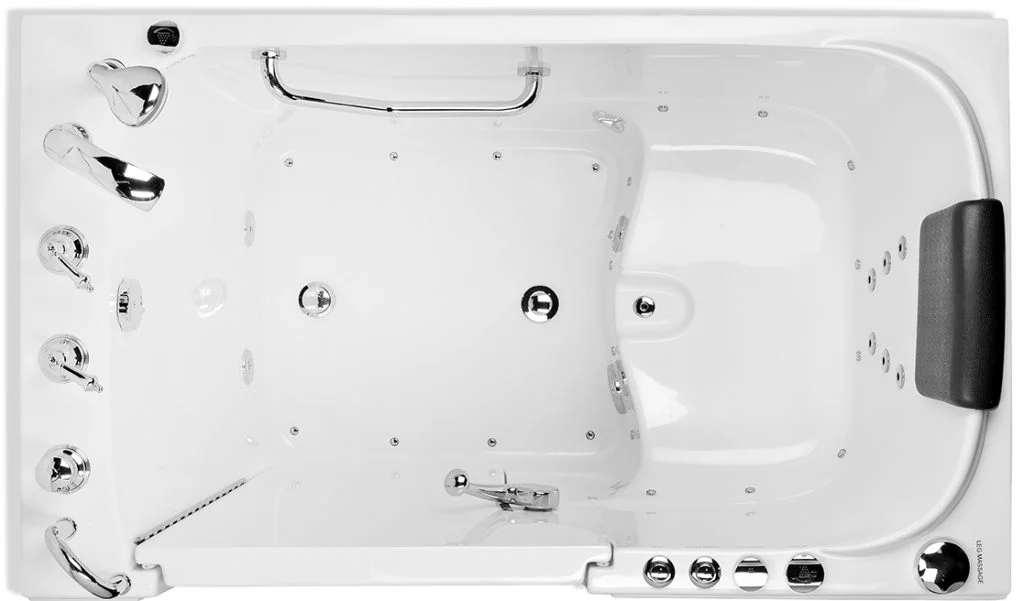
Factors to Consider
Size and Dimensions
- Space Availability: Measure your bathroom to determine how much space you have for a walk in tub. Consider both the footprint and the height, as some models may be taller than standard tubs.
- Bather’s Size: Think about the primary user’s size and mobility. There needs to be enough room inside the tub for comfortable seating and easy maneuverability, without being so large as to make reaching controls difficult.
Door Direction
- Inward vs. Outward Opening: Doors that open inward require less clearance space, making them suitable for smaller bathrooms. Outward-opening doors, on the other hand, offer easier access and are preferable for individuals with larger body sizes or more significant mobility issues. Ensure the door direction aligns with bathroom space and user needs.
Therapeutic Features
- Hydrotherapy Jets: Ideal for relieving muscle pain and improving circulation. If the senior has chronic pain or conditions like arthritis, consider a tub with powerful hydrotherapy options.
- Air Bath Features: Provides a gentler massage than hydrotherapy jets, suitable for sensitive skin or for those looking for a relaxing soak without the intensity of water jets.
- Additional Features: Look for other therapeutic features like chromotherapy (light therapy) and aromatherapy options, which can enhance relaxation and overall bathing experience.
Evaluating Your Bathroom Layout and Plumbing Requirements
Bathroom Layout
- Accessibility: Ensure there’s enough room around the tub for easy access and that the door can open fully without obstruction. Consider the location of existing fixtures and whether any will need to be moved or removed.
- Support Structures: Some walk in tubs for seniors may require additional floor support due to their weight, especially when filled with water. Consult with a professional to assess if your bathroom floor needs reinforcement.
Plumbing Requirements
- Water Heater Capacity: Walk in tubs require a significant amount of hot water. Ensure your existing water heater can fill the tub without running out of hot water, or consider upgrading to a larger tank or tankless water heater.
- Drainage System: Check if your current plumbing system can accommodate the tub, especially considering the quick-drain features many walk in tubs have. You may need to upgrade your drainage to prevent slow drain times.
Remember to check out our complete review: Best Walk In Tubs For Seniors 2024 Review!
Professional Consultation
Given the complexity of choosing and installing a walk in tub, seeking advice from professionals is crucial. A licensed plumber or contractor can provide valuable insights into the suitability of various models for your specific bathroom layout and plumbing system. They can also identify any potential installation challenges and suggest modifications to ensure a smooth and safe installation process.
In conclusion, selecting the right walk in tubs for seniors involves a careful evaluation of both the user’s needs and the technical constraints of your bathroom. By considering the size, door direction, therapeutic features, and the specifics of your bathroom layout and plumbing, you can choose a model that offers the utmost in safety, comfort, and therapeutic benefit.
Installation Process and Considerations
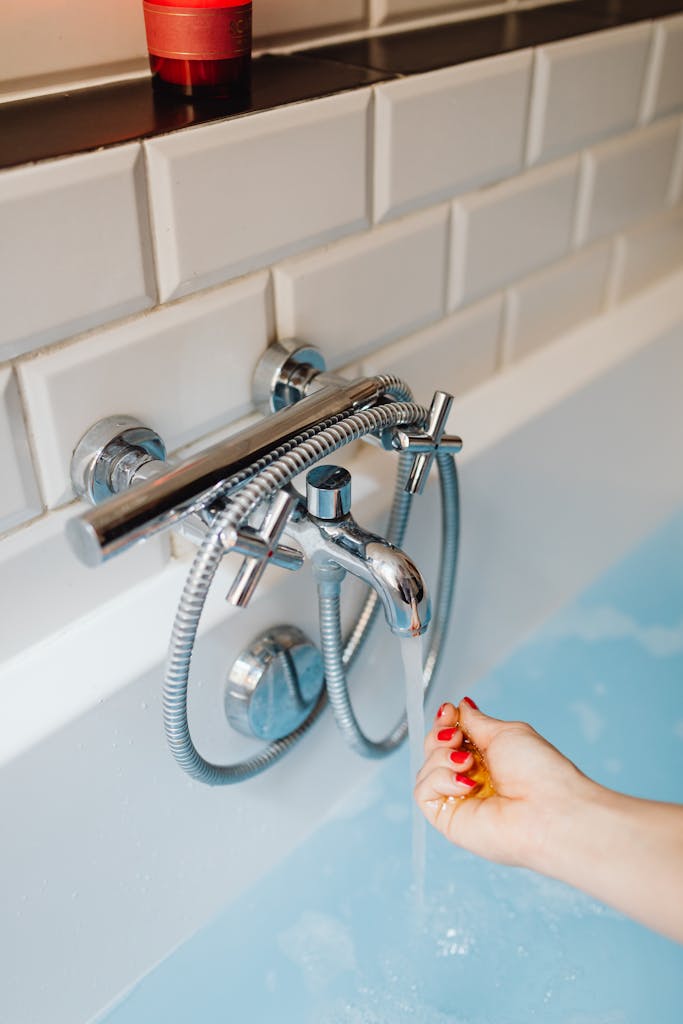
The installation of a walk in tub is a complex process that requires careful planning and attention to detail to ensure safety, functionality, and compliance with relevant standards. Understanding the typical installation steps and important considerations can help prepare homeowners for what to expect and how to best approach this significant home modification.
Typical Installation Process
- Initial Assessment and Measurements: Before installation, a professional will assess your bathroom to take accurate measurements and evaluate the existing plumbing, electrical, and structural framework. This step ensures the chosen walk in tub will fit and function correctly within the available space.
- Removal of Existing Fixtures: The existing bathtub or shower unit will need to be removed. This process may involve some demolition and plumbing disconnections, requiring professional handling to avoid damage.
- Plumbing Modifications: Depending on the model of the walk in tub and the existing plumbing system, modifications may be necessary. This could include adjusting the water supply lines, installing new faucets, or upgrading the drain system to accommodate the tub’s capacity and features.
- Electrical Requirements: Many walk in tubs with therapeutic features require electrical connections to operate hydrotherapy jets, heaters, or other built-in features. A licensed electrician may need to install a dedicated circuit or make other electrical modifications to meet the tub’s requirements safely.
- Installation of the Walk In Tub: The tub is then carefully positioned and secured in place. Connections to the plumbing and electrical systems are completed, ensuring all seals are watertight and all components function as intended.
- Finishing Touches and Cleanup: After installation, any necessary wall, tile, or flooring repairs around the tub area are completed. The installation team should ensure the bathroom is clean, and the tub is ready for use, conducting a final inspection to confirm everything is in working order.
Important Considerations
- Plumbing Modifications: The need for plumbing modifications can vary widely depending on the specific tub model and the existing bathroom layout. It’s crucial to factor in the potential for additional plumbing work when planning the installation, as this can affect both the timeline and the cost.
- Electrical Requirements: Walk in tubs with advanced features may require additional electrical work to ensure they operate safely and efficiently. Compliance with local building codes and safety standards is paramount, often necessitating the involvement of a certified electrician to handle the installation of new circuits or outlets.
- Professional Installation: Due to the complexity and technical requirements of installing a walk in tub, it’s highly recommended to utilize professional installation services. Professionals can navigate the challenges of plumbing, electrical, and structural modifications while ensuring the installation meets all safety codes and manufacturer specifications.
In summary, the installation of a walk in tub involves meticulous planning, skilled modification of existing bathroom structures, and careful adherence to safety and accessibility standards. By understanding the process and considerations involved, homeowners can better prepare for a successful installation that enhances bathroom safety and usability for seniors and individuals with mobility issues.
Cost and Financing Options for Walk-In Tubs
Investing in a walk in tub is a significant financial decision that can greatly impact the quality of life for seniors and individuals with mobility issues. Understanding the cost implications and exploring available financing options can help make this essential home modification more accessible.
Cost Range of Walk In Tubs For Seniors
The cost of walk in tubs for seniors can vary widely based on features, size, brand, and installation complexities. On average, prices can range from as low as $2,000 to upwards of $20,000 for high-end models equipped with advanced therapeutic features such as hydrotherapy jets, air baths, chromotherapy, and aromatherapy systems. The installation costs can also vary, typically ranging from $1,500 to $5,000, depending on the extent of necessary bathroom modifications, plumbing, and electrical work.
Financing Options
Home Improvement Loans
Banks and financial institutions offer home improvement loans that can be used to finance the purchase and installation of walk in tubs. These loans are unsecured, meaning they don’t require home equity as collateral, making them accessible to a broader range of homeowners.
Home Equity Loans or Lines of Credit
For homeowners with equity in their homes, a home equity loan or a home equity line of credit (HELOC) can provide funds at lower interest rates compared to unsecured loans. These options are based on the difference between the home’s market value and the mortgage balance due.
Manufacturer Financing
Some walk in tub companies offer financing plans directly to consumers. These plans can sometimes offer promotional periods with lower interest rates, making them an attractive option for those who qualify.
Rebates and Grants of Walk In Tubs For Seniors
Medicaid and Medicare
While Medicare typically does not cover walk-in tubs, some state Medicaid programs may offer financial assistance under Home and Community-Based Services (HCBS) waivers for home modifications that support aging in place.
Veterans’ Programs
Veterans may qualify for assistance through the Department of Veterans Affairs. Programs like the Home Improvements and Structural Alterations (HISA) grant, Specially Adapted Housing (SAH) grant, or Special Home Adaptation (SHA) grant can provide funding for veterans to install walk-in tubs.
Non-Profit and Community Grants
Several non-profit organizations and community groups offer grants for seniors to make home modifications for accessibility. Local Area Agencies on Aging (AAA) can be a resource for finding available programs in your area.
Tax Deductions of Walk In Tubs For Seniors
In some cases, the cost of installing a walk-in tub may be considered a deductible medical expense on federal income taxes if it’s deemed a medically necessary improvement. Consulting with a tax professional can guide eligibility and how to claim this deduction.
Navigating the financial aspects of purchasing and installing a walk-in tub with a shower requires thorough research and planning. By exploring the various financing options, rebates, and grants available, seniors and their families can find a viable path to afford this important investment in safety and independence.
Maintenance and Cleaning Tips
Proper maintenance and regular cleaning are essential for ensuring the longevity, safety, and hygiene of your walk in tub. Not only do these practices keep the tub looking and functioning at its best, but they also help prevent the buildup of harmful bacteria and mold, ensuring a safe and healthy bathing environment for seniors. Below are some effective tips and important considerations for maintaining your walk-in tub.
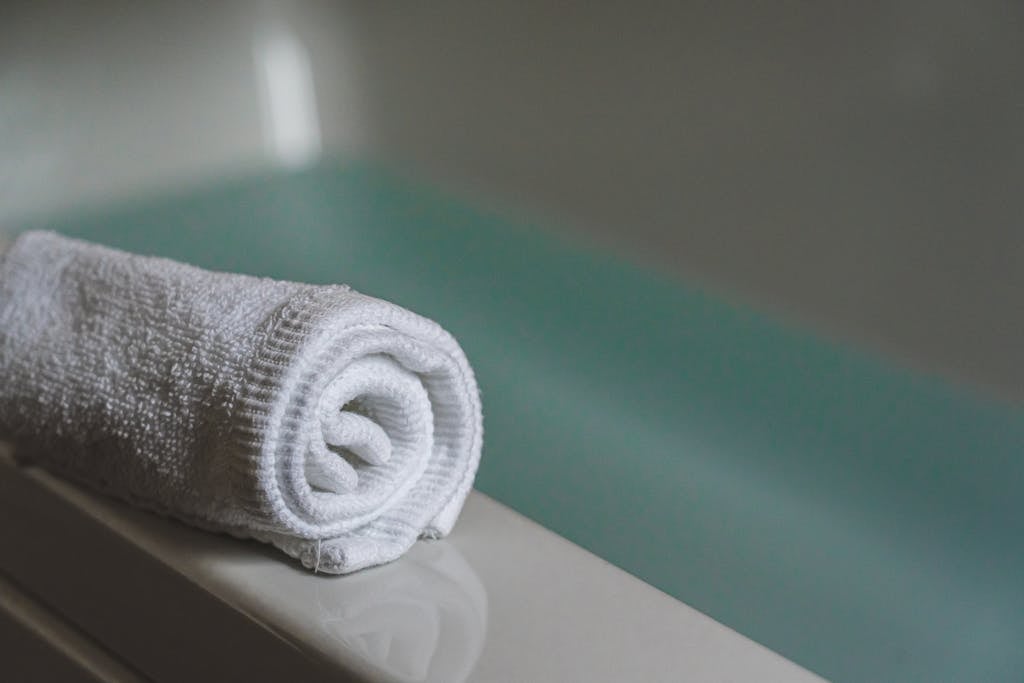
Regular Cleaning Routine
- Daily and Post-Use Cleaning: After each use, rinse the tub and shower area with warm water to remove soap residue and oils. Wiping down the surfaces with a soft cloth or squeegee can help prevent water spots and mildew growth.
- Weekly Deep Cleaning: Use a non-abrasive cleaner designed for bathroom surfaces to clean the tub, seat, and non-slip floor. For the shower area and glass doors (if applicable), a vinegar and water solution can be effective in removing soap scum and hard water stains. Avoid harsh chemicals that can damage the tub’s finish or the door seal.
Maintenance Checks
- Door Seals and Gaskets: Inspect the door seal and gaskets regularly for signs of wear or damage. A compromised door seal can lead to leaks, so replacing any faulty seals promptly is crucial.
- Jets and Nozzles: If your walk-in tub includes hydrotherapy jets, running a cleaning solution through the system monthly can help prevent the buildup of soap scum and bacteria. Consult your tub’s manual for specific cleaning instructions, as manufacturers often recommend particular solutions.
- Drain and Overflow: Check the drain and overflow components periodically to ensure they are clear of debris and functioning properly. A slow-draining tub can be a sign of clogs that need addressing.
- Hardware and Fixtures: Inspect faucets, handles, and other hardware for proper operation. Tighten any loose components and replace parts that show signs of corrosion or malfunction.
Preventive Measures
- Use Recommended Products: Stick to cleaning agents and maintenance products recommended by the manufacturer. Using unsuitable products can damage the tub’s surfaces or its mechanical components.
- Water Softener: If you have hard water, considering a water softener can prevent mineral buildup in your tub and plumbing system, prolonging the life of your fixtures.
- Professional Inspections: For complex systems, especially those involving electrical components or specialized therapeutic features, scheduling annual inspections by a professional can help ensure everything is in optimal working condition.
The Importance of Maintenance
Regular maintenance checks are not just about keeping your walk in tub clean; they’re also about ensuring its safety features remain reliable and effective. Door seals, jets, and other operational components are integral to the tub’s performance and safety. Neglecting these elements can lead to leaks, malfunctions, or unsanitary conditions, all of which compromise the bathing experience and could pose health risks. Therefore, incorporating these maintenance and cleaning tips into your routine is crucial for the ongoing enjoyment and safe use of your walk-in tub with shower.
Adhering to a consistent maintenance schedule and following these cleaning tips can significantly extend the life of your walk-in tub and ensure it remains a safe, hygienic, and comfortable part of your daily routine.
FAQ – Walk In Tubs For Seniors
How much water does a walk-in tub use?
Walk-in tubs vary in size, but on average, they hold between 40 to 80 gallons of water. This is more than a standard bathtub, which typically holds around 25 to 45 gallons. The exact amount for your walk in tub will depend on its size and the water level necessary for your preferred bathing experience.
How long does the installation of a walk in tub take?
The installation time for a walk in tub can vary based on several factors, including the complexity of the plumbing and electrical work required, the need for any bathroom modifications, and the type of tub being installed. On average, the installation can take anywhere from one to three days. More complex installations or significant bathroom remodels may extend this timeframe. It’s important to discuss the expected installation time with your provider or contractor ahead of time to plan accordingly.
What kind of warranty is typical for walk in tubs?
Warranties for walk in tubs vary by manufacturer but typically cover the tub itself, the door seal, and the operating components. Many manufacturers offer a lifetime warranty on the door seal, which is crucial for preventing leaks. Warranties on the tub and components can range from a few years to lifetime coverage. It’s essential to carefully review the warranty details before purchasing a walk in tub, paying close attention to what is covered and any conditions or limitations that may apply.
Can a walk in tub fit into an existing bathroom?
Yes, walk in tubs are designed to fit into most standard bathroom spaces where a traditional tub once was. However, because walk-in tubs can vary in size and require specific plumbing and electrical accommodations, some modifications to the existing space may be necessary. This could include adjusting plumbing lines, installing new electrical circuits, or expanding the space to accommodate a larger tub. A professional assessment can determine the feasibility of installing your chosen walk-in tub in your existing bathroom.
Are walk in tubs with showers easy to clean?
Walk in tubs are designed with ease of maintenance in mind, featuring non-porous surfaces that resist mold and mildew. Many models also come with self-cleaning systems for the jets and easy-access panels for cleaning and maintenance. Regular cleaning after use and periodic deep cleaning will help maintain the tub’s appearance and hygiene. Using recommended cleaning products and following the manufacturer’s care instructions will ensure your walk-in tub remains clean and functional.
Do walk in tubs require special plumbing or electrical modifications?
Some walk in tubs, especially those with hydrotherapy jets and other advanced features, may require additional plumbing or electrical modifications. This could include upgrading the water heater to ensure a sufficient hot water supply, installing a dedicated electrical circuit, or modifying the existing plumbing to accommodate the tub’s drain and fill requirements. It’s important to consult with a professional to understand the specific requirements of your chosen model and ensure your home is prepared to accommodate these needs.
Conclusion of Walk In Tubs for Seniors
Choosing the right walk in tubs for seniors is a pivotal step toward enhancing the safety, comfort, and independence of seniors in their own homes. These innovative bathing solutions are designed with the unique needs of the elderly in mind, offering features that mitigate the risk of falls, alleviate health concerns, and empower users to maintain their hygiene with dignity. The thoughtful integration of safety rails, non-slip surfaces, low-entry thresholds, and therapeutic features in walk-in tubs addresses the physical challenges that often accompany aging, while also providing a luxurious and relaxing bathing experience.
Investing in a walk in tub goes beyond mere convenience; it’s about creating a safer and more accessible environment that respects the desire of seniors to age in place. The benefits of such an investment extend well into the future, potentially reducing healthcare costs associated with falls and injuries and improving the overall quality of life. As we’ve explored, selecting the appropriate model requires careful consideration of various factors, including size, door direction, therapeutic features, and the specifics of your bathroom layout and plumbing requirements.
JustforSeniors.org – Home & Living
Remember to check out our complete review: Best Walk In Tubs For Seniors 2024 Review!

